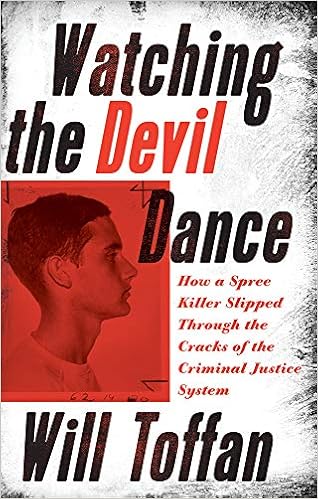The following news story discusses Detroit's "cold cases" and mentions one dating to July 1964. However, it is not the unsolved case of the murder of Pat Brown and Sheldon Miller. Their case is still unsolved, but not mentioned as one being investigated. Hopefully it is now on their radar screen...
-------------------------
Cold homicide cases: Metro Detroit incidents leave families, investigators questioning
This is suburban Detroit, and police agencies have few cold homicide cases to investigate.
Perhaps because of their rarity, they carry significant weight for the officers handed these as-of-yet-unsolved mysteries.
There are emotional attachments to the cases and the families continuously grieving because they’re not sure what happened.
Cases get colder and tougher to solve as time passes without significant clues. And there’s the turmoil from bodies missing, evidence lacking and crime scenes still to be found.
Crime statisticians warn of a
cold case crisis. According to the U.S. Department of Justice, the nation has about 250,000 unsolved murders, and the number rises by several thousand each year.
Locally, in western Oakland and Wayne counties, police say they don’t have enough cold cases — or the staffing and money — to warrant full-time cold case teams or full-time cold case investigators like some big
metropolitan agencies have. But most agencies review their cold cases at least annually to see if there’s something more they can do.
whopper on its cold case investigation plate – the disappeared and assumed dead former Teamsters President Jimmy Hoffa.
Hoffa's family told investigators he was scheduled for a 2 p.m. July 30, 1975, meeting at the Machus Red Fox restaurant on Telegraph Road in a building that now houses Andiamo Ristorante.
“The most significant Cold Case would be the Jimmy Hoffa disappearance,” emailed Lt. Paul Schwab of the township’s investigations division. “But we have not reviewed anything in probably over a year.”...
... “No one ever gives up,” said Livonia’s Lt. Charles Lister, the department’s investigative bureau commander. “You always hope for the best. You just never know if some fleeting scrap of information will come forward that makes a case.”
He provided a sheet of paper not entirely covered with the department’s eight cold homicide cases.
July 26, 1964: Dr. William Parsons and his two sisters were found dead in the closet of their Rosedale Gardens home after an apparent robbery.
March 22, 1977: Timothy King, an 11-year-old boy associated with the Oakland County Child Killer, was found dead on Gill Road, south of Eight Mile Road.
Aug. 10, 1984: Ralph Proctor, a retired Teamsters union official, was found fatally shot in his car on Six Mile Road, between Newburgh and Levan roads. According to media reports, police labeled it a professional killing. Proctor was shot three times in the head with a small-caliber gun.
Aug. 13, 1986: Samuel DeLarosa was found dead in a Five Mile Road dumpster. He was beaten to death.
Jan. 14, 1990: Jason Bickel, 22, of Westland, was fatally shot while working as a security guard at GM Delco property on Eckles Road.
Dec. 11, 1994: D’Wan Sims, 4, went missing while shopping with his mother at Wonderland Mall’s Target store.
Dec. 17, 1996: Francisco Portillo, 54, was fatally shot inside his home by someone posing as a delivery person. His wife, Judy, also was shot. She survived.
Jan. 12, 2001: Marlene Ondercin, 48, was fatally stabbed in her Bretton home.
Westland also continues to investigate eight unsolved homicide cases dating back to the 1970s.
“Any time we, as a police agency, reach out to a victim’s family it opens up a painful memory for them,” Police Chief Jeff Jedrusik said. “Every case has its own unique circumstances. Some cases have hit dead ends, while some cases have suspects but not enough evidence to charge.”
Farmington Hills Police Department investigates seven cold homicide cases dating to the mid-1970s. Four detectives and a sergeant try to meet bi-monthly to discuss the cases, but Det. Sgt. Chad Double said old homicide cases remain just part of their overall responsibilities.
Novi police meet every quarter to discuss three cold homicide cases dating back more than two decades.
Milford police have posted details about two unsolved violent deaths: Anne Doroghazi, a 20-year-old strangled and found partially clothed in a ditch near Camp Dearborn in 1981, and Walter Rubel, 50, of Walled Lake found fatally shot in the Proud Lake State Recreation Area in April 1980.
Bloomfield Township has a
whopper on its cold case investigation plate – the disappeared and assumed dead former Teamsters President Jimmy Hoffa.
Hoffa's family told investigators he was scheduled for a 2 p.m. July 30, 1975, meeting at the Machus Red Fox restaurant on Telegraph Road in a building that now houses Andiamo Ristorante.
“The most significant Cold Case would be the Jimmy Hoffa disappearance,” emailed Lt. Paul Schwab of the township’s investigations division. “But we have not reviewed anything in probably over a year.”
Missing persons efforts
Local police officers assigned to cold cases often turn to other officers and agencies for advice. Michigan State Police Lt. Sarah Krebs, a Metro North assistant post commander, is ready to lend an ear and share her experience...
... Michigan State Police calculates there are about 4,000 people missing in Michigan. While some are runaways and parental kidnappings, some missing people are at the heart of cold homicide cases. ...
... Krebs is haunted by many of Michigan’s unsolved murders and missing person's cases
including the Oakland County Child Killings involving four child victims and the May 24, 1990, disappearance of Paige Renkoski.
The Okemos woman had dropped off her mother at the Detroit airport in the morning. Her purse and shoes were inside her car discovered still running along Interstate 96 just east of the Fowlerville exit.
“Law enforcement resources are very thin,” Krebs said. “A lot of the cases that have decent solvability to them get put on the backburner way too soon. I do feel that that happens.”...
LINK:
Cold cases: Incidents leave families, investigators questioning




